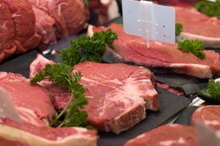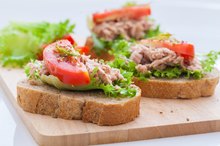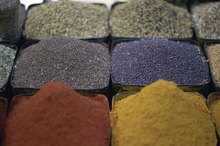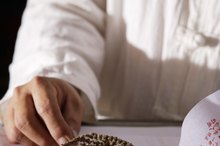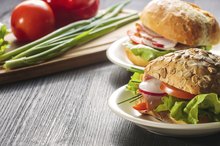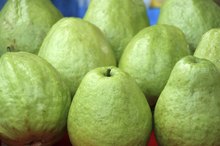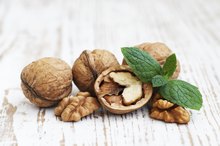How to Cleanse Your Gallbladder
The gallbladder is a small pear-shaped organ attached to the liver that exists as part of the digestive system. The gallbladder's job is to store bile that is created in the liver and secrete it into the duodenum of the small intestine to help break down dietary fats. Cleansing the gallbladder periodically is believed to help prevent instances of gallstones and gallbladder diseases 4. While it is rare, gallbladder cancer might also be prevented by practicing an annual gallbladder cleanse.
Avoid foods that overwork and damage the gallbladder. It is suggested that in the beginning of a gallbladder cleanse, foods that trigger the gallbladder to work or cause damage to the gallbladder should be avoided, including fried foods, oils and excessive fat sources, to give the gallbladder a rest. Alcohol is believed to increase the likelihood of gallstones forming in the gallbladder and should also be avoided during a gallbladder cleanse.
A List of Foods Not to Eat With a Bad Gallbladder
Learn More
Focus the diet on foods that support the health and vitality of the gallbladder, such as foods low in protein and fat. Unrefined grains, legumes, vegetables and fruit are recommended. Consume foods that are believed to help break down gallstones, including lemon, lime, pears, parsnips, seaweed, radishes, turmeric, apples and chamomile tea.
Consume a sudden high intake of dietary fat. Near the end of a gallbladder cleanse, consume a large amount of dietary fats, such as flax or olive oil, to send the gallbladder into spasms, which helps clear out any sediment that can form gallstones or toxins. This phase of a gallbladder cleanse can be dangerous if not done properly because gallstones that are already formed could clog up the gallbladder, resulting in pain and cause for immediate medical attention 4.
Tips
A doctor or nutritionist should work with you to design a gallbladder cleanse that is safe.
Warnings
Do not attempt a gallbladder cleanse without medical instruction and supervision.
Related Articles
References
- ''Healing with Whole Foods: Asian Traditions and Modern Nutrition''; Paul Pitchford; 2002
- ''Nutritional Symptomatology''; Danielle Perrault; 2009
- ''Staying Healthy With Nutrition: The Complete Guide to Diet and Nutritional Medicine''; Dr. Elson Haas; 2006
- University of Maryland Medical Center: Gallstones and gallbladder disease
- Njeze GE. Gallstones. Niger J Surg. 2013;19(2):49-55. doi:10.4103/1117-6806.119236
- Maurer KJ, Carey MC, Fox JG. Roles of infection, inflammation, and the immune system in cholesterol gallstone formation. Gastroenterology. 2009;136(2):425-40. doi:10.1053/j.gastro.2008.12.031
- Halpin V. Acute cholecystitis. BMJ Clin Evid. 2014;2014:0411.
- Balmadrid B. Recent advances in management of acalculous cholecystitis. F1000Res. 2018;7: F1000 Faculty Rev-1660. doi:10.12688/f1000research.14886.1
- Ahmed M. Acute cholangitis - an update. World J Gastrointest Pathophysiol. 2018;9(1):1-7. doi:10.4291/wjgp.v9.i1.1
- Derici H, Kara C, Bozdag AD, Nazli O, Tansug T, Akca E. Diagnosis and treatment of gallbladder perforation. World J Gastroenterol. 2006;12(48):7832-6. doi:10.3748/wjg.v12.i48.7832
- Toouli J. Biliary Dyskinesia. Curr Treat Options Gastroenterol. 2002;5(4):285-291.
- Ahmed M, Diggory R. Acalculous gallbladder disease: the outcomes of treatment by laparoscopic cholecystectomy. Ann R Coll Surg Engl. 2011;93(3):209-12. doi:10.1308/003588411X563402
- Shaffer EA. Gallbladder cancer: the basics. Gastroenterol Hepatol (N Y). 2008;4(10):737-41.
- Wang JK, Foster SM, Wolff BG. Incidental gallstones. Perm J. 2009;13(2):50-4.
- Bree RL. Further observations on the usefulness of the sonographic Murphy sign in the evaluation of suspected acute cholecystitis. J Clin Ultrasound. 1995;23(3):169-72.
- Robinson P, Perkins JC. Approach to Patients with Epigastric Pain. Emerg Med Clin North Am. 2016;34(2):191-210. doi:10.1016/j.emc.2015.12.012
- Pejić MA, Milić DJ. [Surgical treatment of polypoid lesions of gallbladder]. Srp Arh Celok Lek. 2003;131(7-8):319-24.
- Genc V, Sulaimanov M, Cipe G, et al. What necessitates the conversion to open cholecystectomy? A retrospective analysis of 5164 consecutive laparoscopic operations. Clinics (Sao Paulo). 2011;66(3):417-20. doi:10.1590/S1807-59322011000300009
- Katzarov AK, Dunkov ZI, Popadiin I, Katzarov KS. How to measure quality in endoscopic retrograde cholangiopancreatography (ERCP). Ann Transl Med. 2018;6(13):265. doi:10.21037/atm.2018.05.01
- Catalano MF, Thosani NC. (2016). Clinical manifestations and diagnosis of sphincter of Oddi dysfunction. Howell DA (ed). UpToDate, Waltham, MA: UpToDate Inc.
- Lee JY, Keane MG, Pereira S. Diagnosis and treatment of gallstone disease. Practitioner. 2015 Jun;259(1783):15-9,2.
- National Institute of Diabetes and Digestive and Kidney Diseases. (n.d.). Gallstones. https://www.niddk.nih.gov/health-information/digestive-diseases/gallstones
- University of Maryland Medical Center. (2018). Gallstones and gallbladder disease. https://www.umms.org/ummc/patients-visitors/health-library/in-depth-patient-education-reports/articles/gallstones-and-gallbladder-disease
Tips
- A doctor or nutritionist should work with you to design a gallbladder cleanse that is safe.
Warnings
- Do not attempt a gallbladder cleanse without medical instruction and supervision.
Writer Bio
Leah Webber began writing professionally in 2010. She contributes pro bono articles for the health section of a local community newspaper in her native Vancouver, British Columbia. Webber is pursuing her diploma as a registered holistic nutritionist at the Canadian School of Natural Nutrition.
